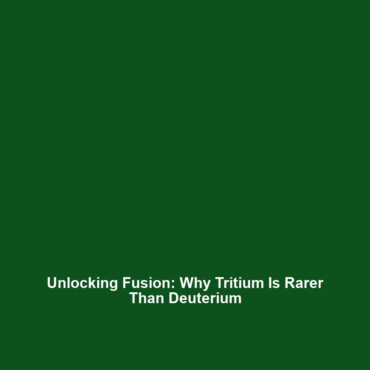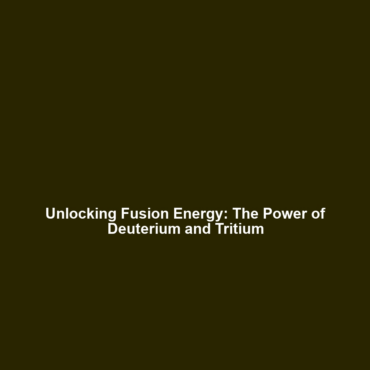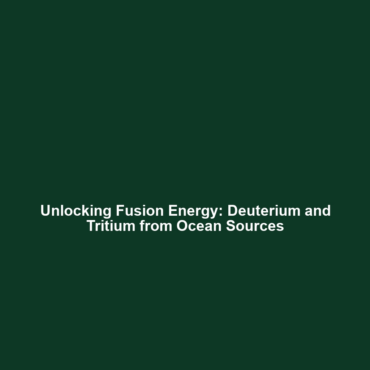Rarity of Tritium: A Key Component in Fusion Energy
Introduction: Tritium, a hydrogen isotope, is significantly rarer than its counterpart deuterium. This rarity is a critical factor in the context of Fusion Energy, which seeks to replicate the processes powering our sun to produce clean, limitless energy. Understanding the implications of Tritium’s scarcity, as well as its breeding process from lithium within fusion reactors, is essential for advancing fusion technologies and achieving sustainable energy solutions.
Key Concepts:
The fundamental principles of Tritium’s rarity and its integration into Fusion Energy rely on several key concepts:
Tritium vs. Deuterium
Tritium contains one proton and two neutrons, while deuterium has one proton and one neutron. With Tritium’s natural occurrence being extremely low, its role in fusion processes is paramount yet challenging.
Breeding Tritium from Lithium
In fusion reactors, Tritium is often bred from lithium through neutron interactions during the fusion reaction. This process is essential for maintaining a sufficient supply of Tritium for fusion reactions to occur effectively.
Applications and Real-World Uses:
Understanding how Tritium, due to its rarity and unique properties, is used in the realm of Fusion Energy reveals several significant applications:
- Fusion Reactors: Tritium is crucial in promising fusion reactor designs, such as ITER, which aims to use deuterium and Tritium for more efficient energy production.
- Nuclear Weapons: Historically, Tritium has been utilized in thermonuclear weapons, although this application is separate from peaceful energy endeavors.
- Medical Applications: Tritium is also used in medical imaging and certain types of luminescent watches, contributing to various technological spheres.
Current Challenges:
Despite Tritium’s potential, there are notable challenges within the field of Fusion Energy:
- Supply Chain Issues: The limited natural abundance of Tritium necessitates complex breeding and extraction processes from lithium.
- Environmental Concerns: Tritium handling poses environmental risks and demands stringent regulatory frameworks.
- Cost Factors: The breeding and extraction processes can be costly and resource-intensive, which hampers large-scale fusion reactor deployment.
Future Research and Innovations:
Ongoing research is exploring innovative solutions to enhance Tritium production and usage in Fusion Energy:
- Advanced Breeding Techniques: Researchers are experimenting with new methods to increase the efficiency of Tritium breeding in reactor environments.
- Next-Generation Reactors: Development of advanced fusion reactor designs, such as Tokamaks and Stellarators, which maximize Tritium utilization.
- Sustainable Lithium Sources: Investigating sustainable means of lithium extraction to ensure consistent Tritium breeding.
Conclusion:
The rarity of Tritium compared to deuterium underscores its significance in the pursuit of Fusion Energy. As advancements continue, tackling the challenges associated with Tritium will be vital for future energy solutions. Continued research and innovation will further unlock the potential of Tritium in fusion applications. For those interested in further exploring nuclear energy and its implications, refer to our articles on Nuclear Energy Overview and Innovations in Fusion Technologies.


